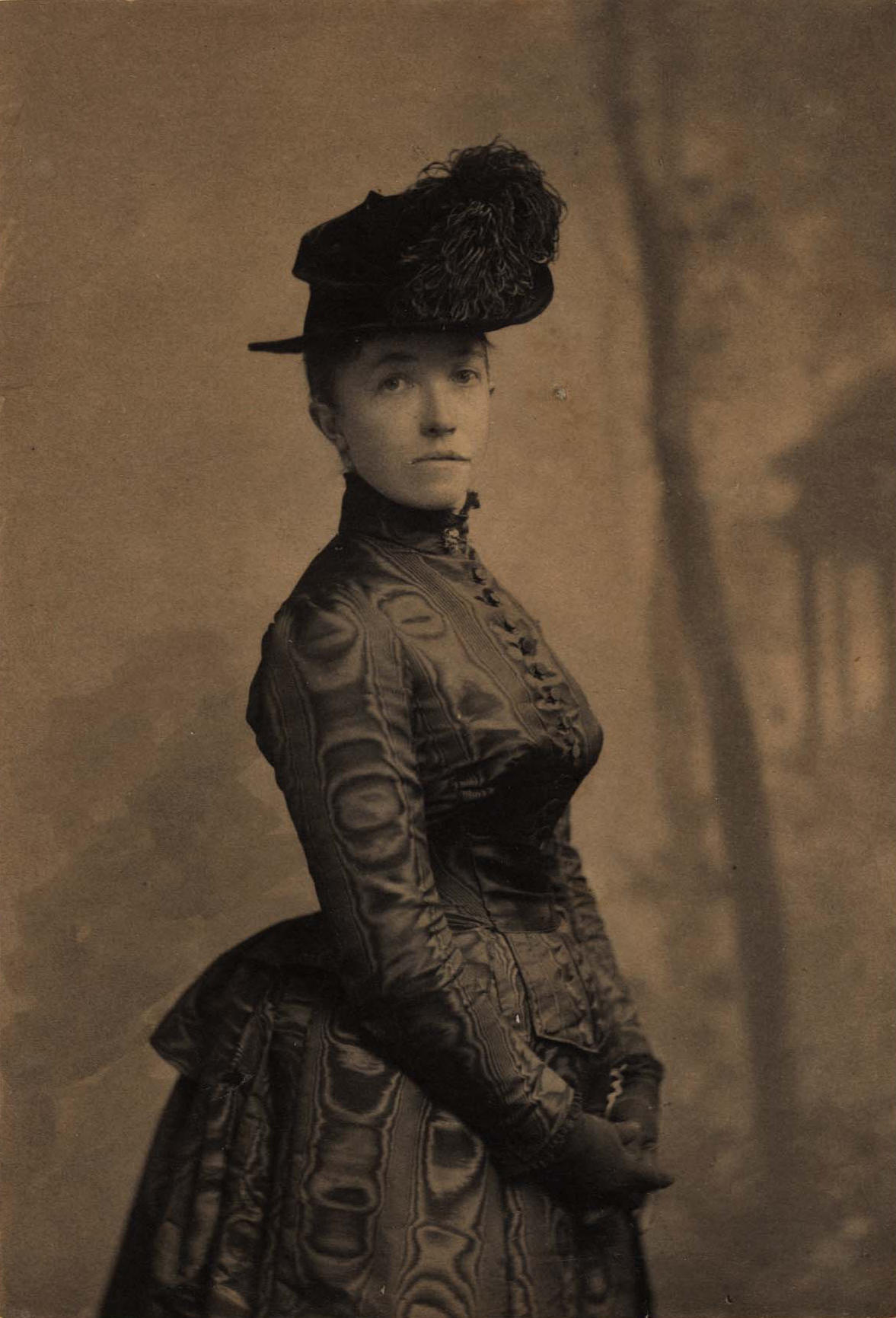Throughout her adult life, Isabella Stewart Gardner routinely appeared in the press—usually for doing something considered outside of the "norm" of behavior for Victorian women of her class and social status. While these journalistic accounts are not always reliable, it does mean we have a wealth of information about her life after her marriage to Jack Gardner, move to Boston, and emergence as a social, civic, and artistic leader. There is far less information available about her early life in New York City and her relationship with her immediate family.

John Thomson (Scottish, 1837–1921), Isabella Stewart Gardner, 1888
Isabella Stewart Gardner Museum, Boston (ARC.008034)
We can start to delve into this part of her life by looking at a watercolor-enhanced photograph tucked away in the Vatichino. It shows a dapper mustachioed man posing with a cane in front of a formal curtain. For those familiar with images of Isabella, like this one, it is clear that this man resembles her. He is, in fact, her father: David Stewart.

David Stewart, 1860–1865. Watercolor and graphite over photo mechanical reproduction
Isabella Stewart Gardner Museum, Boston. See it in the Vatichino
As the only child of his parents to survive past his early 40s, he inherited money from his family. Stewart became a successful businessman in New York City and grew this fortune considerably. A 1925 biography of Isabella provides a brief sketch of David Stewart’s life and career:
Mr. and Mrs. James Stewart [Isabella’s grandparents] had three sons—James Arrott, Charles, and David. In 1813, Mr. Stewart died, leaving his widow a fortune of seventy-five thousand dollars in addition to the home farm…The youngest son, David, was born September 7, 1810; before he was seventeen, he went to New York to make his fortune. He was placed with Russell & Company, importers, to learn the business, and there he met his future partner, Thomas Paton. They…imported Irish and Scottish merchandise, chiefly linen…[He] continued to be an importer until about 1872, but gradually his interests were concentrated in mining…. [ultimately forming] the Stewart Iron Company.¹
The New York Times published a similar account of Stewart’s life in an obituary when he passed away in July 1891. The obituary also alludes to something that Isabella herself never seemed to mention: several years before his death the widowed Stewart—Isabella’s mother Adelia passed away 1886—married a second wife who was only three years older than Isabella, Mary Elizabeth Hicks Peck (1837–1916).
Unfortunately, beyond these particulars of his career and mentions of membership in institutions like the Knickerbocker Club, we do not know much about David Stewart. As Carter wrote, “Mrs. Gardner talked little about her childhood and her family. She admired her father, was loyal to her mother, and loved her brother David.”² She seems to have spoken much more about her grandmother and even her (somewhat dubious) ancestral connection to Mary Queen of Scots. One thing is for sure, however, father and daughter bore an unmistakable resemblance to one another.
David Stewart also helped to set his daughter on her unique path. Because her parents decided to enroll her in a Parisian finishing school, she met Julia Gardner (Jack's younger sister). She ultimately married Jack and moved to Boston—placing her on a trajectory that would include travelling around the world and creating her exceptional museum in the Fens.

James Inglis (Scottish, 1835–1904), Julia Gardner, about 1865
Isabella Stewart Gardner Museum, Boston (ARC.007440)
And when her father passed away and left much of his estate to Isabella as his only surviving child, those funds were part of the remarkable financial resources that allowed her to build the collection, the museum, and later endowed the institution. Though David Stewart may only be present in the collection in that one humble photograph, his legacy also lives on through the Isabella Stewart Gardner Museum.
You May Also Like

Read More on the Blog
The Original Isabella Stewart

Read More on the Blog
Isabella in China

Read More on the Blog
Mary Queen of Scots Relics
¹Morris Carter, Isabella Stewart Gardner and Fenway Court (Boston: 1925), pp. 8–9.
²Carter, p. 10.